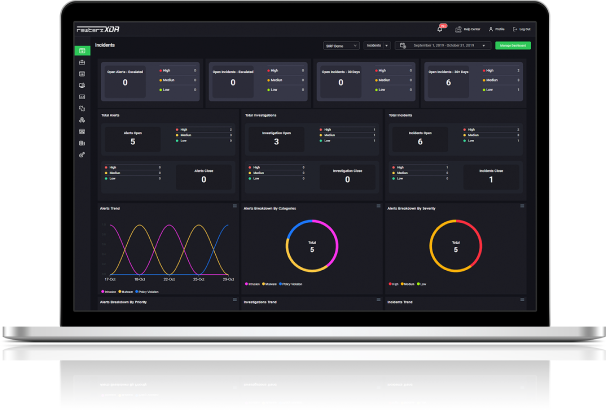

GitHub Tools Deployed in CrazyHunter Ransomware Campaigns – Active IOCs
April 18, 2025
Hackers Actively Exploit Critical Vulnerabilities in Exchange and SharePoint Servers
April 20, 2025
GitHub Tools Deployed in CrazyHunter Ransomware Campaigns – Active IOCs
April 18, 2025
Hackers Actively Exploit Critical Vulnerabilities in Exchange and SharePoint Servers
April 20, 2025Severity
High
Analysis Summary
The Mirai botnet is a type of malware that infects Internet of Things (IoT) devices, such as routers, security cameras, and other smart devices, to launch distributed denial-of-service (DDoS) attacks. The botnet was first discovered in August 2016 and quickly gained notoriety for its ability to launch some of the largest DDoS attacks ever recorded, including an attack that took down the DNS provider Dyn.
Mirai works by scanning the internet for devices that use default or easily guessable passwords, such as "admin" or "password". Once a vulnerable device is identified, the malware infects it and adds it to the botnet, which can then be used to launch DDoS attacks on a target.
Mirai is particularly effective because it can exploit the large number of poorly secured IoT devices that are connected to the internet. This makes it difficult to defend against, as many of these devices have limited processing power and memory, and may not receive regular security updates.
Since its discovery, Mirai has continued to evolve and new variants of the malware have been detected. The best defense against Mirai is to ensure that IoT devices are properly secured, with strong passwords and regular security updates. Network administrators can also use tools to monitor for unusual traffic patterns that may indicate a DDoS attack is underway.
Impact
- Server Outage
- Data Loss
- Website Downtime
Indicators of Compromise
MD5
96f307b0ba3bb11715fab5db8d61191f
34438fc423c0760c5481e1ea868a54f0
6b9963dd7790c3b06cb679354d31cc32
263d0f904b3a11a038f8866af170c462
SHA-256
e6db3de3a21debce119b16697ea2de5376f685567b284ef2dee32feb8d2d44f8
a23b6397c08caffb8e4906eb6b0ff024d38600c5389b4811a95614e5ef683431
6bd54cde785149a941804cc880a18a8c11b1877bade72724c46fd718bf5ed71e
17ef60d97386ccbbfaa8fe538c496fed96085b8ab6ac56b9c211f0b910a31d70
SHA1
0fbac5c94f32b0e011baf39df82a65d293b14e7d
1e13d1809f4c42ece2acc91a069e4d9fe28e576b
e37e662fc7e44712094d3aeb2e348fc8d9f3bad5
0e6286bb0f425e41ca5d73edc30ccadba4e56ab7
Remediation
- Block all threat indicators at your respective controls.
- Search for indicators of compromise (IOCs) in your environment utilizing your respective security controls.
- Never trust or open links and attachments received from unknown sources/senders.
- Upgrade your operating system.
- Enable antivirus and anti-malware software and update signature definitions on time. Using multi-layered protection is necessary to secure vulnerable assets.
- Immediately change default passwords on IoT devices to unique ones.
- Keep devices' firmware and software up to date to ensure that known vulnerabilities are patched.
- Implement firewalls and intrusion detection systems to monitor and control traffic to and from IoT devices.
- Employ tools that can identify unusual behavior or traffic patterns that might indicate a DDoS attack or a compromised device.
- Disable any unnecessary services or features on IoT devices to reduce their attack surface.
- Follow security best practices, such as disabling remote management if not needed and enabling security features provided by the device manufacturer.
- Deploy intrusion detection and prevention systems (IDS/IPS) to monitor for anomalous or malicious network activity.
- Set up alerts for unusual traffic patterns that might indicate a DDoS attack or a compromised device.








